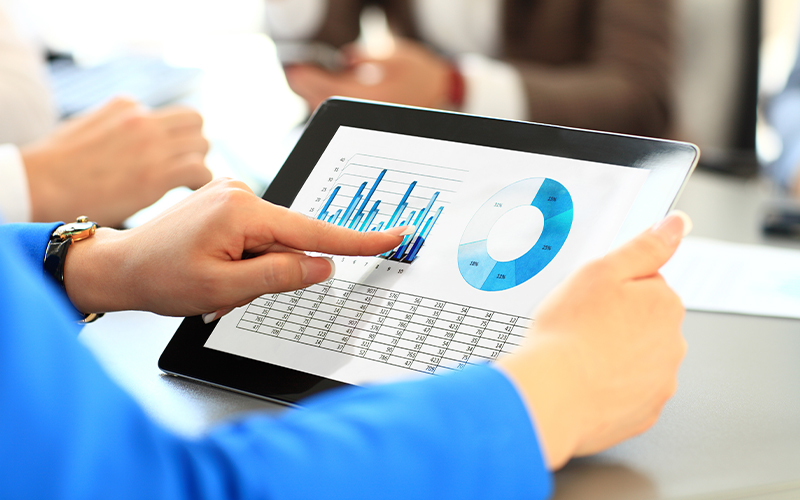Spend analytics is the foundation of strategic sourcing. However, it goes way beyond cutting costs and controlling maverick spend. A good spend analysis platform helps you answer these questions –
- What are we buying?
- How much are we paying?
- How much have we bought?
- Who are we buying from?
- Who is buying within the company?
- What terms are we buying on?
It helps you identify suppliers that are adding the most value to your business. For large businesses with hundreds of suppliers, this information is useful in forging relationships of trust and mutual understanding. You can incentivise the best suppliers with bigger orders and get volume discounts. A win-win situation for all.
This article will explain what spend analytics is, its components, and how it helps you improve supplier relationships.
What is spend analytics?
Spend analysis helps monitor and review current and historical spending. The goal is to reduce the cost of procurement, improve strategic sourcing, and increase efficiency and supplier relationships. The exercise divides spend data into KPIs and metrics, which makes it easy to identify patterns.
The data for spend analysis should meet the following criteria –
- It should come from all procurement and financial systems, and software databases. This includes ERP, expense management and general ledger.
- It should undergo normalisation and linking.
- The data should classify based on a hierarchical taxonomy to the individual item level.
- It should be enriched so that all the required fields are complete.
- The data should undergo processing in an AI engine and business rules engine and under human spend analysts.
Components of spend analysis
The three main components of spend analysis are spend visibility, spend analysis, and procurement process improvement.
- Spend visibility
- Spend analysis
- Procurement process improvement
By having clean data, KPIs, and metrics, you can see the spending from many viewpoints. Common KPIs are cost savings, spend under management, supplier performance, and operational and employee KPIs.
This step includes asking questions about spending and procurement and analysing the metrics to reduce costs.
Using the results from the analysis to implement results for future performance and supplier relationships.
How do spend analytics help manage supplier relationships?
Supplier relationships are key to your business success, and they thrive when there is a human element of understanding and trust. However, you should still have detailed analysis and relevant data to make strategic decisions about supplier selection, price negotiation, and performance monitoring.
Spend analytics can help you achieve and manage great supplier relationships because of the following reasons –
- Group the suppliers based on common parameters such as their geographical location and the products/services they provide. This will help you quickly choose the right supplier in a given situation.
- Analyse the performance of the supplier using the quality of its product/service and the cost of procurement.
- Based on the spend data, you can negotiate better business terms which are beneficial for both you and the supplier.
- Get a bird’s eye view of spend across departments and consolidate procurement into larger orders to get volume discounts. This also gives bigger business to your preferred suppliers.
- Manage supply chain disruptions and quickly switch to another supplier in the group. By grouping similar suppliers together, you can keep the communication channels open with the disrupted supplier and restart the business once they are functional.
- Give more business to the suppliers that provide the best quality and price and have the capacity to scale up with your increasing demand.
- Encourage high-performing and proactive suppliers. Maintain healthy communication channels and, if necessary, set up mutual training.
- By eliminating unnecessary and non-performing suppliers, you not only streamline procurement but also give more business to those who are performing better.
- If your business requires you to meet state and federal compliances, you can select suppliers that help you do so. For a supplier, this ensures a high-quality client that promises long-term business.
For organisations on the digital transformation journey, agility is key in responding to a rapidly changing technology and business landscape. Now more than ever, it is crucial to deliver and exceed on organisational expectations with a robust digital mindset backed by innovation. Enabling businesses to sense, learn, respond, and evolve like a living organism, will be imperative for business excellence going forward. A comprehensive, yet modular suite of services is doing exactly that. Equipping organisations with intuitive decision-making automatically at scale, actionable insights based on real-time solutions, anytime/anywhere experience, and in-depth data visibility across functions leading to hyper-productivity, Live Enterprise is building connected organisations that are innovating collaboratively for the future.
How can Infosys BPM help?
ProcureEdge is an AI-powered spend intelligence platform that enhances your spend visibility across categories, products, business units, and suppliers. The tool takes you towards holistic digital transformation thanks to its key features –
- Data ingestion, cleansing, and de-duplication.
- Spend classification.
- Actionable insights and opportunity identification.
- KPI scorecard.
- Root-cause analysis.
- Mix and trend dashboards.
Read more about spend data analysis and supplier relationship management solutions at Infosys BPM.







